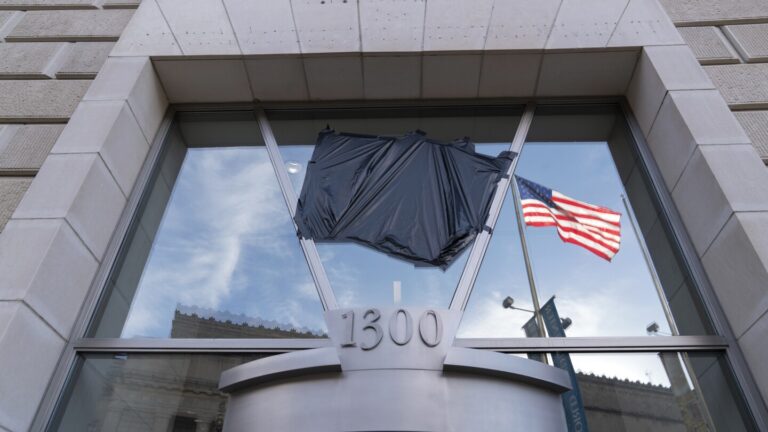Judge Temporarily Blocks Trump Admin from Placing USAID Workers on Leave
In a significant legal victory for employees of the United States Agency for International Development (USAID), a federal judge has temporarily blocked the Trump administration’s directive to place certain USAID workers on leave. The decision, delivered by U.S. District Judge Christopher Cooper, has sparked discussions across various sectors, shedding light on the complexities of government employment policies and their implications for international aid.

The contentious order aimed to impose sweeping leave requirements for a select group of USAID employees, particularly those associated with sensitive diplomatic missions. This controversial move raised considerable concerns over employee rights, job security, and the potential impact on mission-critical programs designed to assist vulnerable populations worldwide. Judge Cooper’s interim ruling has opened the door for further scrutiny of the administration’s policy decision.
Statistics reveal just how pivotal USAID is in American foreign policy. According to the 2020 "U.S. Global Leadership Report," 90% of Americans believe that international assistance improves the nation’s global reputation. Furthermore, USAID’s budget for 2021 was approximately $51 billion, reflecting its crucial role in addressing global challenges such as poverty, health crises, and climate change. Thus, the possible furloughing of dedicated workers who are culturally and technically proficient represents a severe disruption.

The judge’s decision is pivotal not just in terms of immediate repercussions but also in underscoring the ongoing tension between political appointees and career civil servants. The ruling states, “The Court finds that the plaintiffs have demonstrated a likelihood of success on the merits of their claim, as well as irreparable harm if the leave policies are put into effect.” This highlights the importance of civil service protections and questions the lengths to which political agendas can infringe on established employment practices.
Critics of the administration argue that placing USAID workers on leave could hinder ongoing projects critical to improving health and education in developing countries. A notable example is USAID’s work in global health programs, where data suggests that every dollar spent on immunization can return up to $44 in economic benefits. Disrupting the workforce employed in these initiatives poses risks not just to job security but to millions of lives that depend on timely aid.

Despite pushback from various organizations, the Trump administration initially justified the leave directive by citing budgetary constraints and a desire to streamline operations. However, the abrupt nature of such a decision raised eyebrows among employees and advocates alike. Data from the Federal Employee Viewpoint Survey reveals that levels of employee engagement among federal workers are already low, with only 37% feeling that their agency is concerned for their well-being. The potential for increased turnover and further morale issues only compounds these existing problems.
Judge Cooper’s decision is not only a legal blow for the Trump administration but also implicates broader themes in governmental operations. The case may set a precedent that could affect future administrations when determining how they manage their workforces, particularly within agencies focused on international development and humanitarian aid.

In the wake of this ruling, labor unions and advocacy groups have rallied to support the impacted employees. American Federation of Government Employees (AFGE) president Everett Kelley emphasized, “This decision is a victory for public servants and all workers. It reminds us that we have rights, and we will not be silenced.” Such sentiments resonate deeply, illustrating the ongoing struggle between the rights of individual workers and overarching governmental policies draped in political agendas.
As the case unfolds, the implications will likely resonate beyond the walls of the judicial system. It serves as a reminder that governmental decisions can significantly impact not only the employees involved but also the crucial missions they serve. The landscape of international aid continues to evolve, and the fate of USAID workers remains hanging in the balance, underlining the need for vigilance in protecting employee rights within federal service.
The story surrounding USAID workers is not merely a legal drama; it is an assertion of worker rights within government services that has potential long-term effects on how America wields its soft power on the global stage. As more evidence and arguments are presented, the focus will undoubtedly remain on the essential role that these employees play and the consequences of their treatment within the bureaucratic structure.



